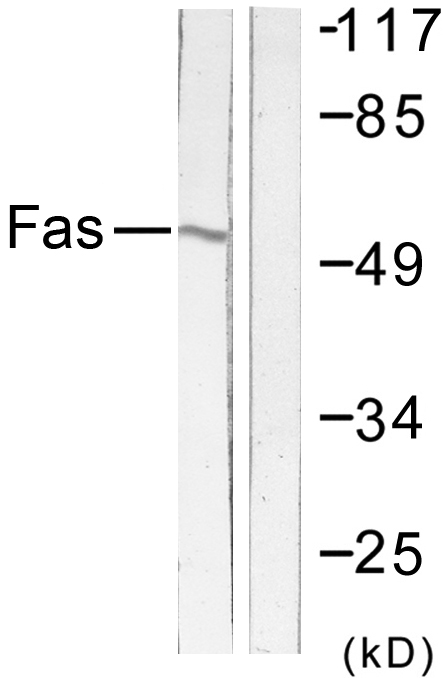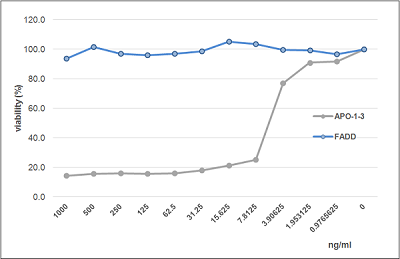anti-Fas (human), mAb (APO-1-1) (preservative free)
AG-20B-0079PF
ApplicationsFunctional Assay, Flow Cytometry, ImmunoHistoChemistry
Product group Antibodies
TargetFAS
Overview
- SupplierAdipoGen Life Sciences
- Product Nameanti-Fas (human), mAb (APO-1-1) (preservative free)
- Delivery Days Customer10
- ApplicationsFunctional Assay, Flow Cytometry, ImmunoHistoChemistry
- CertificationResearch Use Only
- ClonalityMonoclonal
- Clone IDAPO-1-1
- Concentration1 mg/ml
- Estimated Purity>95%
- Gene ID355
- Target nameFAS
- Target descriptionFas cell surface death receptor
- Target synonymsALPS1A, APO-1, APT1, CD95, FAS1, FASTM, TNFRSF6, tumor necrosis factor receptor superfamily member 6, APO-1 cell surface antigen, CD95 antigen, FASLG receptor, Fas (TNF receptor superfamily, member 6), Fas AMA, TNF receptor superfamily member 6, apoptosis antigen 1, apoptosis signaling receptor FAS, apoptosis-mediating surface antigen FAS, mutant tumor necrosis receptor superfamily member 6, tumor necrosis factor receptor superfamily, member 6
- HostMouse
- IsotypeIgG1
- Protein IDP25445
- Protein NameTumor necrosis factor receptor superfamily member 6
- Scientific DescriptionFas (CD95) is a member of the death receptor (DR) family, a subfamily of the tumor necrosis factor receptor superfamily. The formation of the Fas death-inducing signaling complex (DISC) is the initial step of Fas signaling. Activation of procaspase-8 at the DISC leads to the induction of DR-mediated apoptosis. Stimulation of Fas has also been reported to trigger non-apoptotic pathways. It has been shown that membrane-bound FasL is essential for the cytotoxic activity, whereas soluble FasL appears to promote autoimmunity and tumorigenesis via induction of non-apoptotic pathways, in particular NF-kappaB. - Monoclonal antibody. Recognizes human Fas. Applications: FACS, FUNC, IHC. Clone: APO-1-1. Isotype: Mouse IgG1. Liquid. In PBS. Purity: >95% (SDS-PAGE). Fas (CD95) is a member of the death receptor (DR) family, a subfamily of the tumor necrosis factor receptor superfamily. The formation of the Fas death-inducing signaling complex (DISC) is the initial step of Fas signaling. Activation of procaspase-8 at the DISC leads to the induction of DR-mediated apoptosis. Stimulation of Fas has also been reported to trigger non-apoptotic pathways. It has been shown that membrane-bound FasL is essential for the cytotoxic activity, whereas soluble FasL appears to promote autoimmunity and tumorigenesis via induction of non-apoptotic pathways, in particular NF-kappaB.
- Storage Instruction-20°C,2°C to 8°C
- UNSPSC12352203





